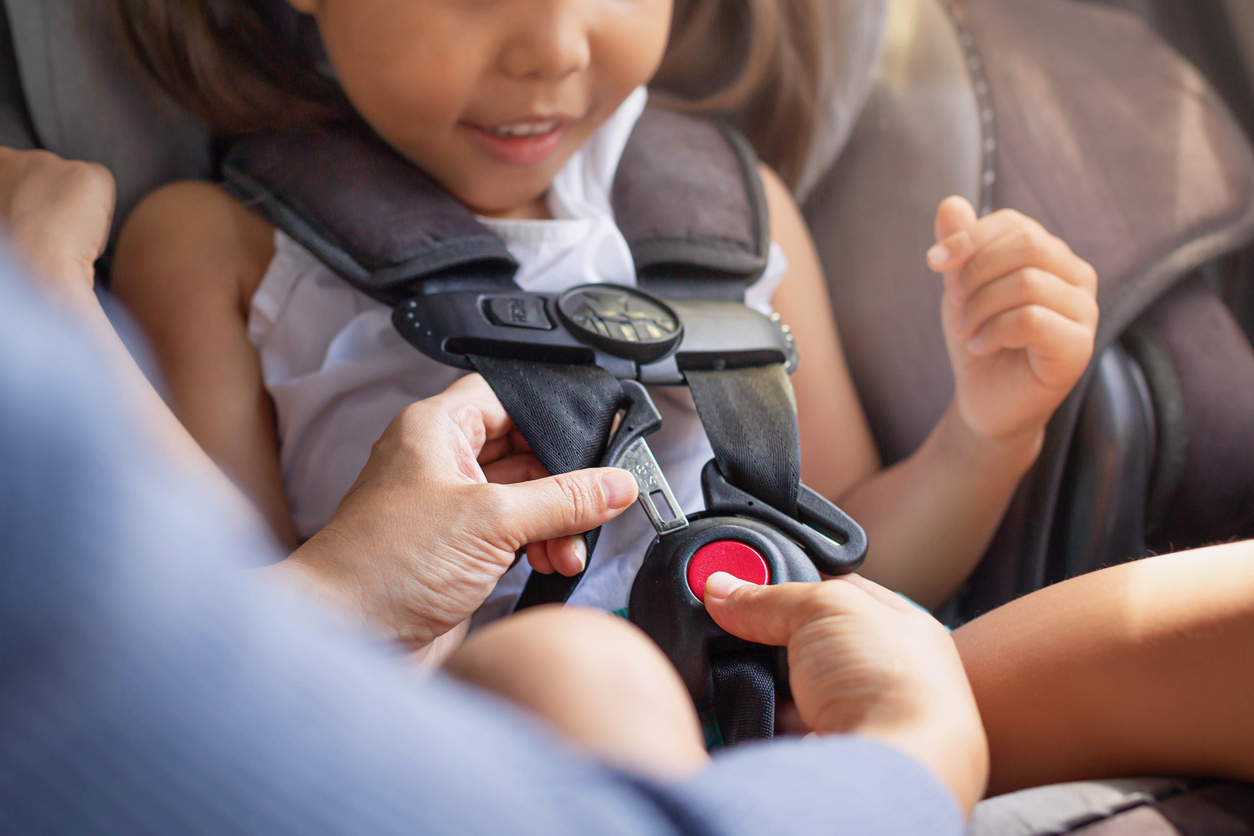
As a mother and a pediatrician for more than 23 years, I completely relate when parents tell me their children are their life. We would do anything to protect our children and keep them out of harm’s way. That’s why I’m sharing the importance of care seat safety with you because proper care is so valuable in today’s world.
According to the Center for Disease Control, 38% of children involved in fatal car accidents were not buckled up correctly. This statistic indicates that the comparative advantage of buckling a child up in the car is significant in protecting the life of a child. Likewise, there is a correlation between the parent’s buckling habits and the habits that children develop, which means that in order to protect children, we must also educate their parents on proper car safety and use of seat belts. The continued effort to support proper car seat education for new, and returning, parents is important in preventing any more needless casualties.
Car Seat Guidelines for Infants
These guidelines recommended by the American Academy of Pediatrics exist to optimize safety in all vehicles for all children. Remember that all children under the age of 13 should remain in the back seat – regardless of what type of apparatus they use because airbags are dangerous for young children.
Infants should stay in rear-facing car seats as long as possible. Infants can remain in rear-facing car seats as long as the manufacturer indicates on the label. The types of car seats available for infants are rear facing seats, which typically allow infants between 26-35 inches and 22-35 pounds, but the manufacturer label is important to make this determination. Children should remain in rear facing car seats until 2 years of age or as long as possible until they reach the weight or height restriction set by the manufacturer.
Car Seat Guidelines for Toddlers
After the infants have outgrown their rear-facing car seat around the age of 2, forward-facing car safety seats are important through at least 4 years of age. The type of car seats available are forward facing convertible, or forward facing with a harness. These car seats are typically available for children until they reach 65 pounds depending on the model’s manufacturing standards.
Car Seat Guidelines for Children
Once the children have outgrown their model’s forward-facing weight and height limit, they can move to belt-positioning booster, which for most children is around 8 years of age. Until the child reaches a height where the seatbelt is able to rest on their chest comfortably, around the height of 4 foot 9 inches, they should remain in a booster seat for optimal safety. The safety concern for the children shorter than 4 foot 9 inches is significant without the booster seat to allow the seatbelts to do their job correctly.
How to Properly Use Seat Belts for Older Kids
When a child has outgrown their booster seat, lap and shoulder seat belts need to be worn at all times. Likewise, all children younger than 13 years should ride in the rear seats of the vehicles. The rear seats are the safest space for children who are under the age of 13. Every shift between types of car seats and protective mechanisms incurs some decrease in protection. Thus, parents are encouraged to wait as long as possible before transitioning their children to the next steps.
Important Factors to Look Out For in Car Safety for Kids
Aside from all the points mentioned above, parents should NOT use car seats that are:
- Are too old or show signs of wear and tear
- Do not have a date of manufacturing and a model number
- Does not come with instructions
- Is missing parts
- Was recalled
- Have been in car accidents before, even minor car accidents
To check if a car seat has been recalled, you can call the manufacturer or contact the National Highway Traffic Safety Administration (NHTSA) Vehicle Safety Hotline at 888/327-4236 or visit the website at https://www.nhtsa.gov/recalls
Remember that all car seats need to be installed properly and safely, through the use of a guide or trusted official source. Proper installation and usage of car seats are of utmost importance to their success as tools for the protection of your child.
You as parents and citizens have the responsibility to ensure that your child has the highest chance of survival in the event that the worst happens. By using these guidelines and the information from the manufacturing companies, you can ensure that your child has the best possible chance to remain protected.
 Dr. Gomathy Mohan is a proud member of the TopLine MD Alliance practicing Pediatrics in Palm Beach County.
Dr. Gomathy Mohan is a proud member of the TopLine MD Alliance practicing Pediatrics in Palm Beach County.
The TopLine MD Alliance is an association of independent physicians and medical practice groups who are committed to providing a higher standard of healthcare services. The members of the TopLine MD Alliance have no legal or financial relationship with one another. The TopLine MD Alliance brand has no formal corporate, financial or legal ties to any of the affiliated physicians or practice groups.



